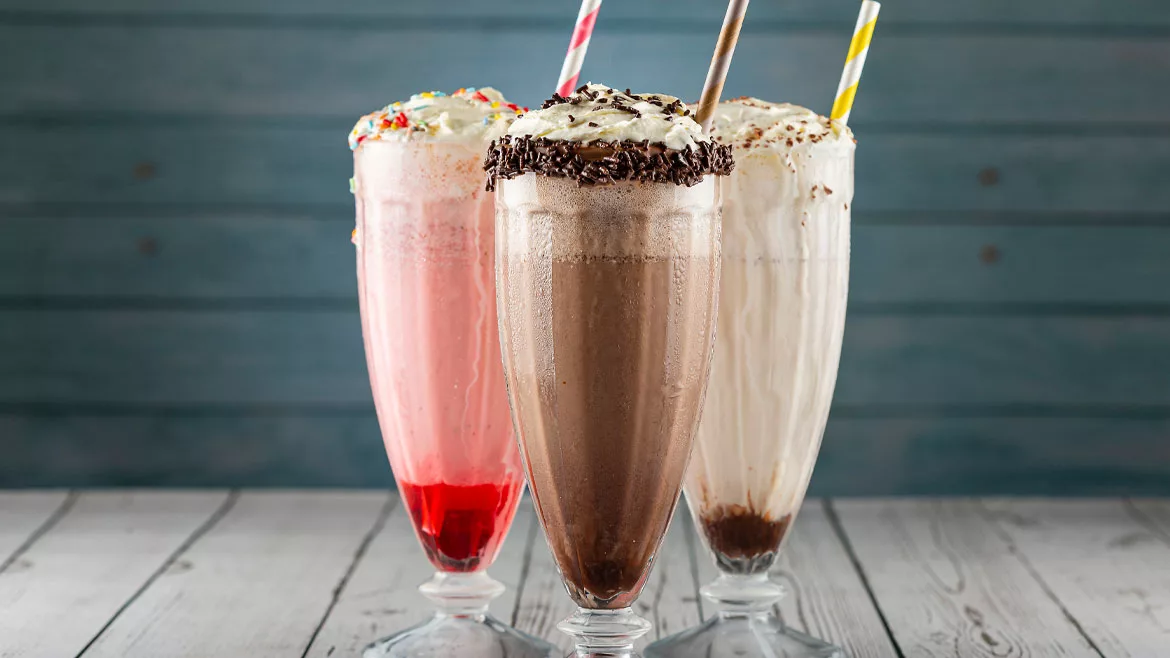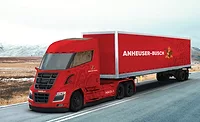Changes within beverage fleets highlight importance of liftgate spec'ing and maintenance
Proper space allocation key for liftgate success
Although SKU counts are expanding and other market forces are impacting logistical strategies, beverage distributors are increasingly looking at equipment changes to gain a competitive edge. One of the more visible changes is the trend toward bulk (dry-box/dry-van) bodies and trailers.
Among the challenges in the shift to bulk bodies and trailers is that many delivery locations do not have dock facilities. Adding a liftgate that uses an electro-hydraulic powered platform to move loads between the trailer/body floor and ground level is the preferred solution. Spec’ed and maintained properly, liftgates can deliver benefits like increased productivity, reduced product damage and fewer driver injuries.
Having properly allocated space can be one of the most critical factors in spec’ing a liftgate. “I would always put in at least 10-20 percent of capacity headroom,” says Arnold Kowal, product manager for Maxon Lift. “I don’t think that’s a matter of over spec’ing but rather one of proper spec’ing.”
Physical size also is a key consideration when choosing a liftgate. An 84-inch-deep gate is a popular choice with many beverage fleets because it can accommodate two pallets, a pallet jack and the operator. However, in its “stowed for dock-loading” position, this size of the gate generally is incompatible with dock safety systems that engage the truck’s or trailer’s rear guard to prevent movement away from the dock during loading.
Most sources of liftgate problems can be mitigated at the spec’ing stage. Even though the liftgate’s mechanical components are typically trouble free when properly maintained, it’s important that the wear/bearing surfaces are compatible with an operating environment. Available wear surfaces react differently to heat, cold, dust and spray.
It’s also important to ensure that sufficient amperage and voltage reaches the liftgate. Proper alternator ratings on the truck/tractor, proper batteries and proper wiring all play a role in delivering the power required by the liftgate. The hydraulic system on a liftgate will still require consideration in the spec’ing process. For operation in colder climates, fleet managers should ask, “Does the gate rely on gravity for descent?”; or “Is it powered down hydraulically?”
As distributors continue to optimize routes, it’s not uncommon to have as few as 10 minutes of road time between delivery stops. This can present a tough schedule for recharging the liftgate batteries. This situation is further exacerbated by voltage drop because of the distance and connections between the alternator and the liftgate batteries.
“Preventive maintenance is another important step to mitigating potential headaches,” Kowal says. “Battery voltage testing should be done at least once a year. Any bare terminal connection should be cleaned of any corrosion, re-tightened and treated with a protective coating that will prevent further corrosion. Electrical connectors should be disconnected, treated with dielectric grease and reconnected to prevent airborne moisture from causing corrosion from the inside.”
Automating more than shifting
Manual, automatic or automated, commercial truck transmissions are each good at some things but not necessarily good at everything. Manual gearboxes typically are the most compact and lightweight and have the least amount of power loss, but they require manual shifting. Torque-converter automatic transmissions do all the shifting work but add significant size and weight and are less fuel efficient because of power loss.
One early solution to the shortcomings of manual and automatic transmissions was to automate the shifting. Once the shifting technology was perfected, automating operation of the clutch offered a good compromise between the efficiency of a manual and the ease of an automatic, at least for long-haul applications.
Although automating the clutch operation takes the workload off the driver, most other shortcomings of a manual clutch remained because computers still have difficulty matching the footwork finesse of a top driver. Most of these troubles are related to what happens when the clutch is disengaged.
The answer: Don’t disengage the clutch. But, how do you do that with power still applied to the transmission? For Eaton, the solution was to add a second clutch, so that one clutch always is engaged when the truck is in motion.
Just as long-haul applications were the ideal for developing single-clutch automated transmissions, beverage delivery is an ideal application for dual-clutch automated transmissions. Eaton’s first major foray into dual-clutch transmissions is aimed at Class 6-7 medium-duty trucks, but the transmission’s architecture was designed to eventually cover Class 4-8.
Scheduled for launch in mid-2015, the seven-speed Procision transmission features a dual-clutch design and electronic shifting that measures grade, vehicle weight and throttle input to optimize fuel efficiency and provide smooth, continuous delivery of torque under all shift conditions.
The dual-clutch technology enables smooth acceleration from a stopped position and optimizes shift points to efficiently get to the highest gear. Gear changes are accomplished by switching the engine torque between clutches with the next gear pre-selected.
The dual-clutch module, which is self-contained within the transmission, is hydraulically controlled and oil cooled for extended life. A five-spring damper is used between the engine and clutch module to control torsional vibrations.
Eaton’s Dynamic Shifting feature allows the transmission to automatically switch between economy and performance shift schedules based on weight, grade and driver demand. An optional and adjustable Urge to Move and Creep Mode enables low-speed maneuverability. The transmission’s Hill Helper technology prevents the truck from accidentally rolling backward or forward for up to 3 seconds while on grades of up to 8 percent, allowing for a controlled launch.
Designed for a typical service life of 10 years or 400,000 miles, the Procision transmissions carry a three-year/unlimited-mileage warranty.
Looking for a reprint of this article?
From high-res PDFs to custom plaques, order your copy today!





